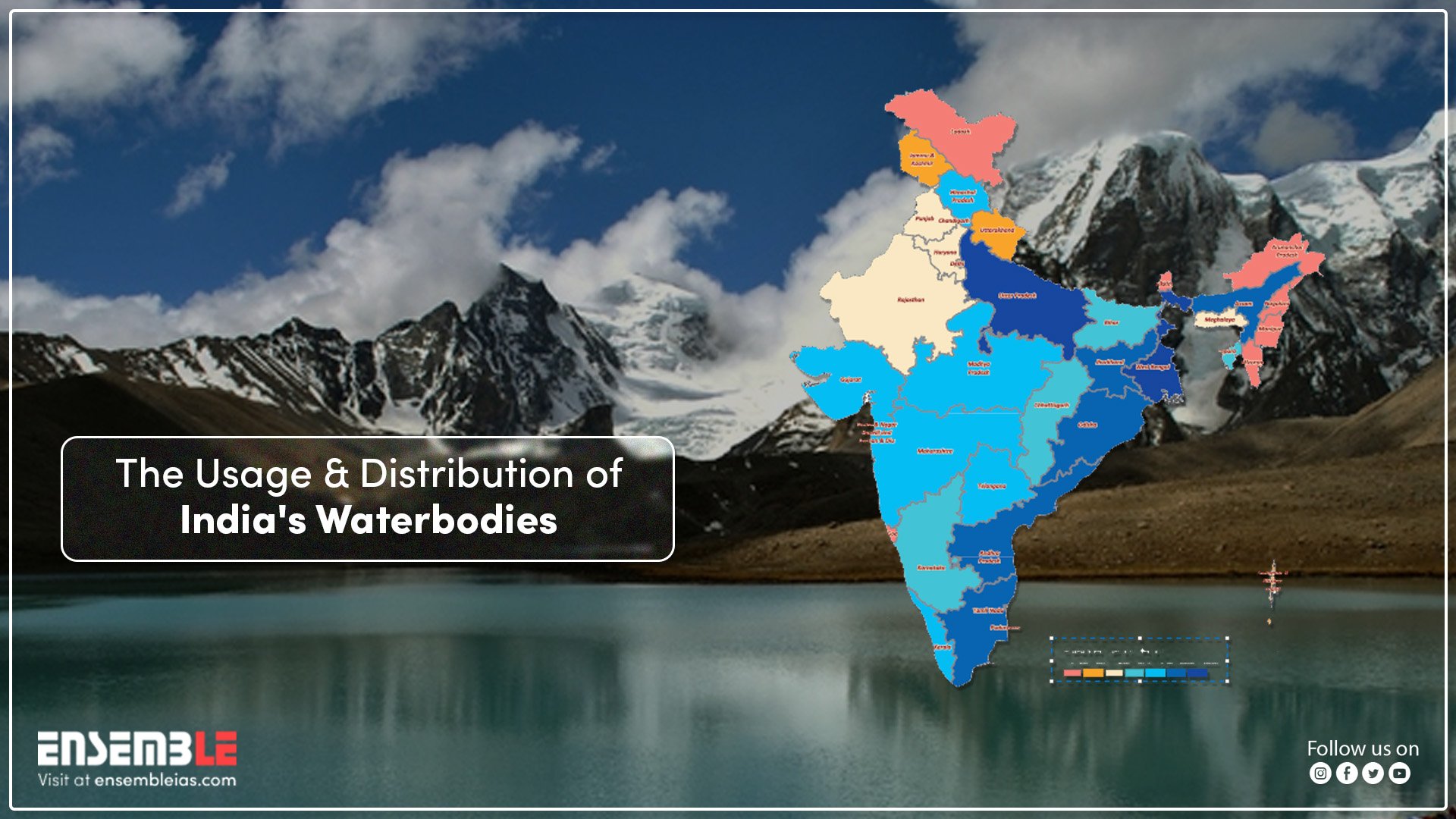What is the topic?
The fast removal of fresh water from streams, lakes, aquifers, and artificial reservoirs, as well as the looming water stress and scarcity faced worldwide, are raising concerns on a global scale, according to the United Nations World Water Development Report of 2022. Additionally, this scenario has worsened as a result of shifting climatic patterns, frequent natural disasters, and unexpected earthquakes and pandemics.
With only 4% of the world’s freshwater resources, India, which has about 17% of the world’s population, clearly shows the necessity for its wise usage and effective water risk management. We must concentrate on strategies to encourage the wise use of water through rivers, lakes, etc., and lessen its wastage.
What is water stress and how does it affect the proper water distribution?
Water stress occurs when the demand for water exceeds the supply during a specific time period or when poor quality limits its usage, leading to an inequitable distribution of water across the country from water bodies.
Water distribution characteristics include accessibility, quality, and availability. Water risk is the probability that an entity could face a problem with water (such as water scarcity, water stress, flooding, infrastructure deterioration, or drought) as a result of declining water quality and ineffective water governance. Hence, it raises concerns about how can water from water bodies be managed in a way that it gets easily utilized.
What is India’s current water management situation?
Currently, more groundwater is extracted by India than by China and the United States combined the second and third largest extractors. However, in India, only 8% of groundwater extracted is used for drinking, 80% is used for irrigation, and the remaining 12% is used for other purposes.
According to the NITI Aayog’s Composite Water Management Index, there are acute water shortages affecting more than 600 million people in India. The nation’s water usage is predicted to outstrip its supply by a ratio of two by 2030.
Constitutional Provisions to protect water bodies
Fundamental Right: The Article 21 of the constitution of India states that water is a fundamental human necessity and is a part of right to life.
Water supply, irrigation, canals, drainage, embankments, water storage, and water power are all topics covered in Entry 17 of the State List.
According to Article 262, the use, distribution, or control of interstate rivers or river valleys may give rise to conflicts or complaints that must be resolved by law.
Entry 56 of the Union List states that, to the extent that Parliament deems it necessary and in the public interest, the federal government may manage and develop interstate rivers and river valleys.
The 1974 Water (Prevention and Control of Pollution) Act creates an institutional framework for preventing and controlling water pollution while upholding requirements for water quality.
Legal Provisions: Inter-State Water Dispute Act, 1956: The Inter-State Water Dispute Act enables the states to enroll the central government in setting up an Advisory River Board to resolve issues in inter-state cooperation.
How can we utilize and distribute the water bodies conservatively?
– Sustainable Groundwater Management: Proper mechanisms and rural-urban integrated projects are required for artificial groundwater recharge, domestic rainwater harvesting, joint use of
surface and groundwater, and reservoir regulation.
– Smart Agriculture: When compared to furrow (flood) irrigation, drip irrigation is a potent technology that can cut water use by 20–40% while boosting crop output by 20–50%.
– A sustainable natural solution for watershed management and environmentally friendly infrastructure can be provided by combining blue and green aspects in modern infrastructure planning.
Green denotes green roofs, gardens, and permeable surfaces. Water features including rivers, canals, ponds, and marshes are indicated in blue.
– Setting up water conservation zones and focusing on effective water governance, improved data discipline, and the status of water bodies at the regional, state, and federal levels are
necessary.
– Utilizing Modern Water Management Techniques: Water-related data systems can be connected with information technology. Additionally, recent advances in science and technology have made it
possible to clean and safe-for-drinking water that was previously deemed unfit for consumption.
Summary at a glance:
– Encourage the wise use of water through rivers, lakes, etc., and lessen its wastage.
– All about water stress and how it affects the proper water distribution
– Status of Water Management in India
– Necessary Constitutional Provisions to protect water bodies
– Utilisation and distribution of water bodies conservatively




